
Manipulated investments and aggressive collection tactics led to widespread customer distress; the bank was found to be generating excessive income through fees, penalties, and non-compliance, triggering initial warnings from Rastra Bank.
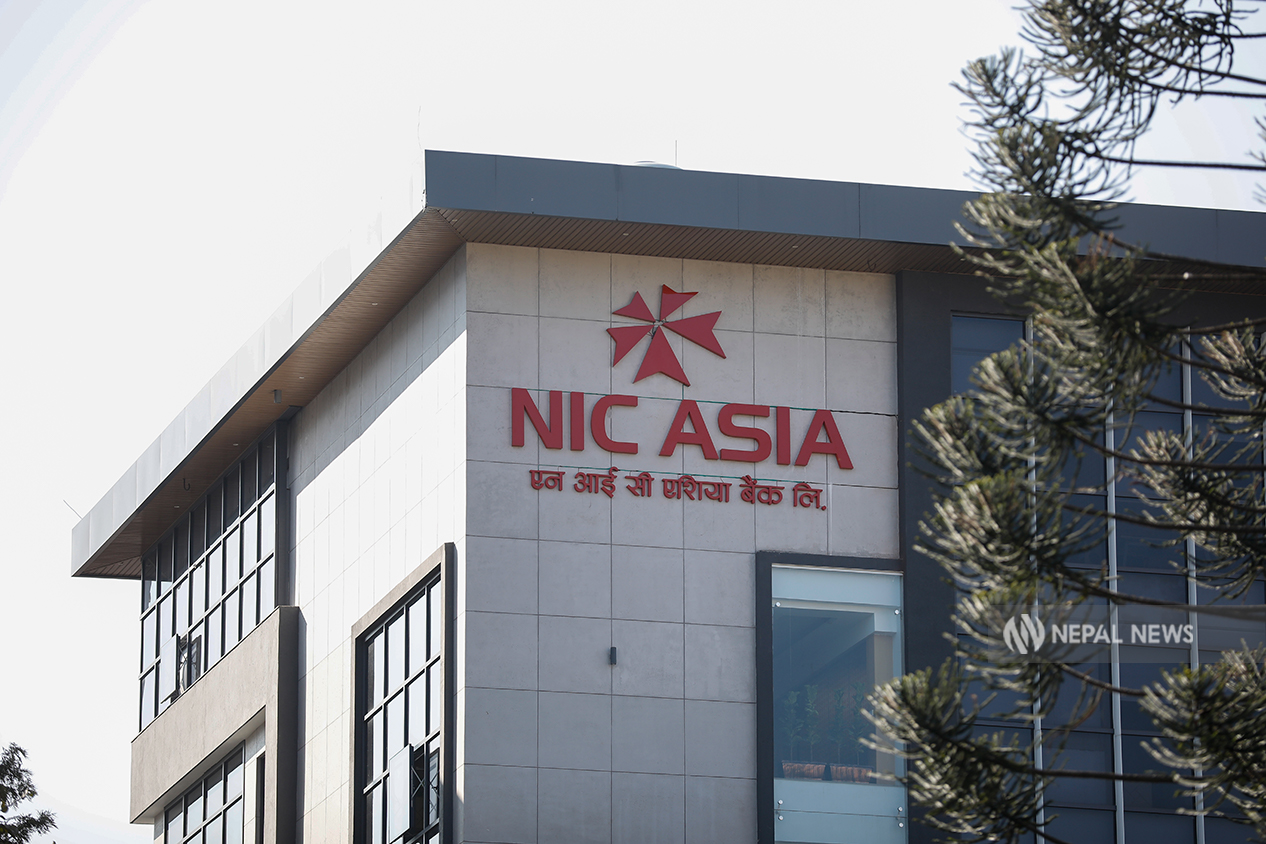
KATHMANDU: “Bank Pani, Sathi Pani
Ramro Pani, Hamro Pani”
“(The bank too, the friend too
Good also, ours also)”
This has been the slogan of NIC Asia Bank for 10 years. Praise for the bank’s ‘virtue’ of providing as much loan as anyone needed and investors receiving excellent returns was all over the market. The schemes the bank brought were so attractive that hardly any other bank seemed ready for them. NIC’s dominance on hoardings, NIC’s (discussion/fame) in the media. Even in banking circles, the talk was—progress should be made like NIC has.
At that time, the managerial leadership of the bank was held by Roshan Kumar Neupane. His stories of success were written in the media in such a way that he was called a ‘magician’ and not a banker, for becoming the Chief Executive Officer (CEO) at the young age of 38, the youngest in Nepali banking history. But NIC Asia Bank has become an example of how a well-functioning institution can become weak when the bank’s promoters and CEO collude, misuse political access, and disregard good governance.
Before finding out the facts of how the bank made miraculous progress in the short span of seven years under Neupane’s leadership and how it has now reached a state where it needs to be saved, let’s look back at the past.
Nepal Industrial and Commercial Bank (NIC) and Bank of Asia Nepal were two separate banks. After these banks merged in June 2013, they became NIC Asia Bank.
The bank’s Board of Directors appointed Neupane as Chief Executive Officer from December 2018. Neupane, a Chartered Accountant, started his banking career at NIC Bank itself. He led the bank after serving as Head of the Internal Audit Department for seven and a half years, Head of Risk Management for two years, Assistant Chief Executive Officer for 11 months, and Acting Chief Executive Officer for 10 months. However, Neupane resigned from the post on September 17, 2025, with one year remaining in his tenure.
What Neupane did against financial discipline in his seven-year tenure can be compared to setting fire to his own house. And now, he has departed after weakening the bank he himself led.
Aggressive market expansion
While still in the acting leadership role, Neupane introduced a 50-year installment facility for home loans in October 2018, which was the longest-term loan scheme in the country’s banking history. Through this scheme, which the bank itself called a ‘miraculous home loan scheme,’ a huge amount of loans went into real estate.
After that, Neupane increased investment focused on small and medium enterprises. The bank was rapidly announcing attractive and aggressive schemes. Due to this strategy, deposits were also piling up in NIC. A time even came when NIC’s schemes created stress for high-ranking employees of other banks. ‘NIC can do it, why can’t you?’ the promoters of other banks would pressure their management.
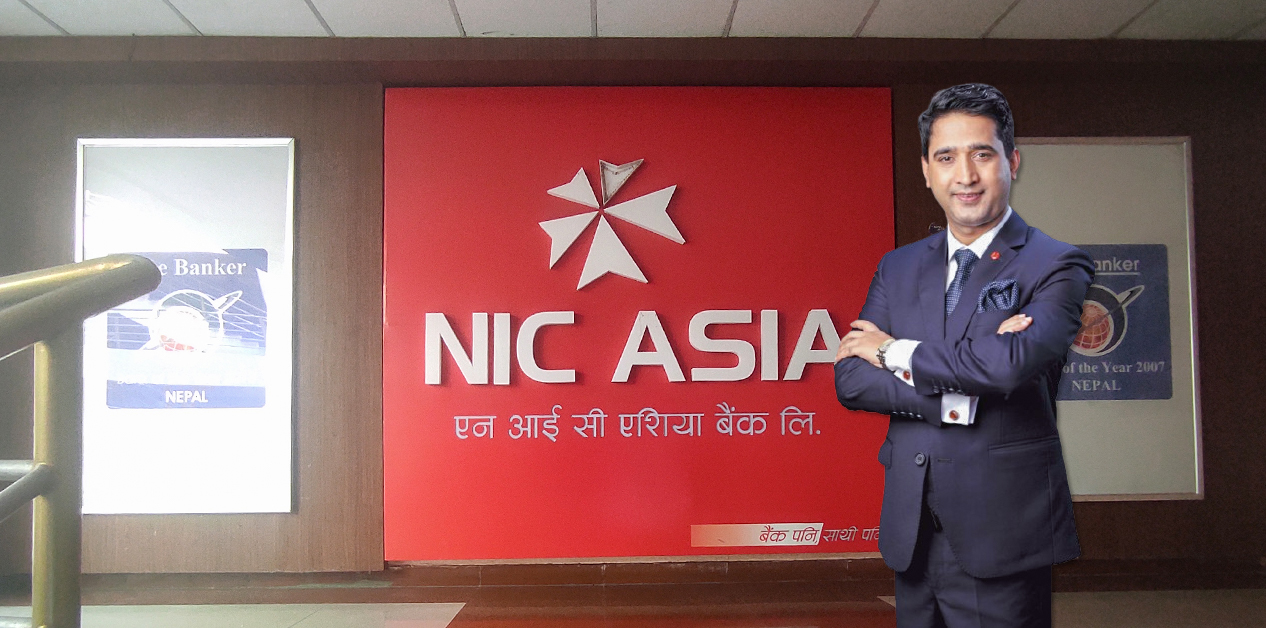
Former CEO of NIC Asia Bank, Roshan Kumar Neupane. Photo credit: NIC Bank’s website
To understand how strong the impact of this was, a rumored conversation between a former banker and Chandra Prasad Dhakal, President of the Federation of Nepalese Chambers of Commerce and Industry, is famous among bankers. Amidst the Corona pandemic in March 2020, the Nepal Rastra Bank adopted policies like low interest rates, refinancing, and rescheduling of payable loans to keep the economy afloat. Banks took this as an opportunity for investment expansion. It was like winning a lottery for NIC Asia Bank, which was aggressively expanding its investment.
What Neupane did against financial discipline in his seven-year tenure can be compared to setting fire to his own house. And now, he has departed after weakening the bank he himself led.
At that time, the former banker, who requested not to be named, told the industrialist Dhakal, who is also the Chairman of Global IME Bank, “This is not the time for the bank to take huge growth, be restrained.” But Dhakal is said to have told him, “You yourself are handing over the bank you were running to others, and telling us to sit quietly? Look, how NIC Asia Bank is running!”
Due to the flexible policy of the Nepal Rastra Bank, the country’s economy experienced a ‘slow-down’ for a long time. Low-interest loans went into real estate. The price of land increased sharply. Even now, banks are finding it difficult to recover the investment made in home loans at that time.
The policy of NIC Bank at that time was to give as much loan as desired to anyone. There was a saying in the banking sector, ‘Look at the collateral, if it can cover it, hand over the money.’ The bank chose emerging urban areas as new places for loan investment. Small and medium entrepreneurs were the first priority for loans. NIC Bank adopted a policy of attracting customers by giving more loans than the collateral valuation done by other banks.
Under Neupane’s leadership, the bank invested Rs 121.74 billion in loans in the fiscal year 2017/18. By the fiscal year 2020/21, loan investment increased by 117.54 percent to Rs 264.84 billion. In the fiscal year 2019/20, this bank also invested Rs 173.742 billion in loans.
While NIC Asia was aggressively expanding its loans, the overall banking sector’s loan expansion was not favorable. According to Rastra Bank data, the growth of commercial banks’ loan flow in the fiscal year 2020/21 was 27.3 percent. Nepal Rastra Bank data shows that the growth of commercial banks’ loan flow in the fiscal year 2019/20 was only 16 percent.
Rastra Bank officials say that after the economy was heading one way and NIC Bank another, the then-Governor of Rastra Bank, Maha Prasad Adhikari, summoned CEO Neupane to Baluwatar and took his statement.
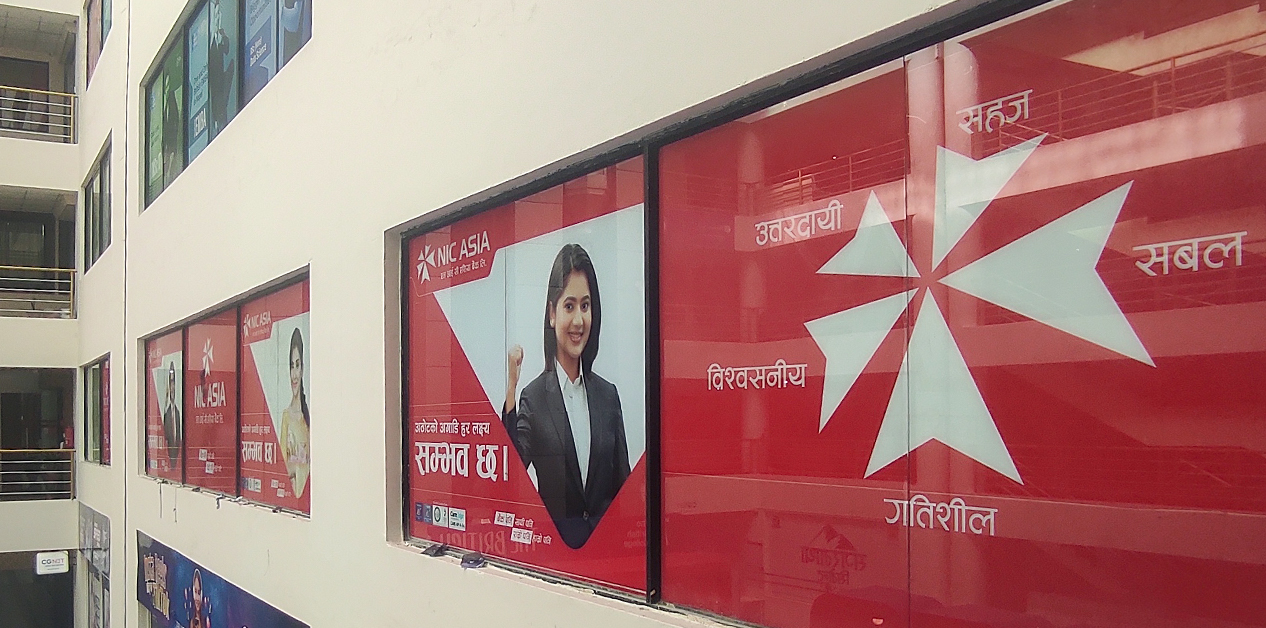
Photo: Nepal News
For greater loan expansion, a corresponding amount of deposit was also required. For that, the bank rapidly increased the interest rate offered on fixed deposits. The bank raised the fixed deposit interest rate to 9.25 percent in January 2020, 10.05 percent in January 2021, and up to 12.03 percent in April of the same year.
In July 2022, the bank published another scheme and said—You deposit money in NIC Asia Bank, we will give you 10 times more. According to the calculation, under the scheme, depositing Rs 1 million in the bank for 20 years 10 months and 12 days would yield Rs 10 million back.
Before that, NIC Asia Bank had created a ‘bancassurance’ scheme and also sold life insurance policies. The commission the bank earned from selling insurance policies alone was more than Rs 300 million annually. This scheme started by NIC Asia was later followed by other banks. However, Nepal Rastra Bank had imposed a ban from July 2019, preventing banks from selling insurance policies other than those related to loans.
The bank attracted customers with such novel schemes. One after another branch was added, saying it would expand the bank’s presence nationwide. The number of ATM outlets was also sharply increased. According to the bank, until December 1, 2018, the bank had 268 branches, 37 extended counters, and 281 ATMs across the country. There were 1.35 million savings accounts. By the end of the fiscal year 2024/25, the bank’s branches increased to 360. ATM outlets were increased to 673. There were 4.20027 million savings account holders.
It was natural for operating expenses to increase correspondingly as the branch network expanded. The operating expense, which was Rs 124 billion in the fiscal year 2017/18, reached Rs 206 billion by 2023/24. Employee expenses, which were Rs 178 billion at that time, have now reached Rs 447 billion.
Downward journey
Rapid growth fulfilled the desire to make the bank big, and to become a promoter and CEO of a big bank, but the manipulation in investment started pushing the bank towards disrepute.
Ramesh Prasad Paudel of Imadol is a victim of such manipulated investment. He had asked the bank for a home loan. But the bank issued an overdraft of Rs 4.2 million against the house collateral. Paudel used that money to add a floor to the house. According to Paudel, the conditions set while taking the loan were an 8.5 percent interest rate, no increase in the interest rate, and yearly renewal. But three months after taking the loan, the bank told him to renew the loan every three months, or to repay the loan.
According to him, the bank started calling him repeatedly. In the middle, the interest rate was increased to up to 16 percent. Not only that, Paudel has also publicly released a video claiming that the bank caused mental stress by sending security guards to his house and sending letters through the post office.
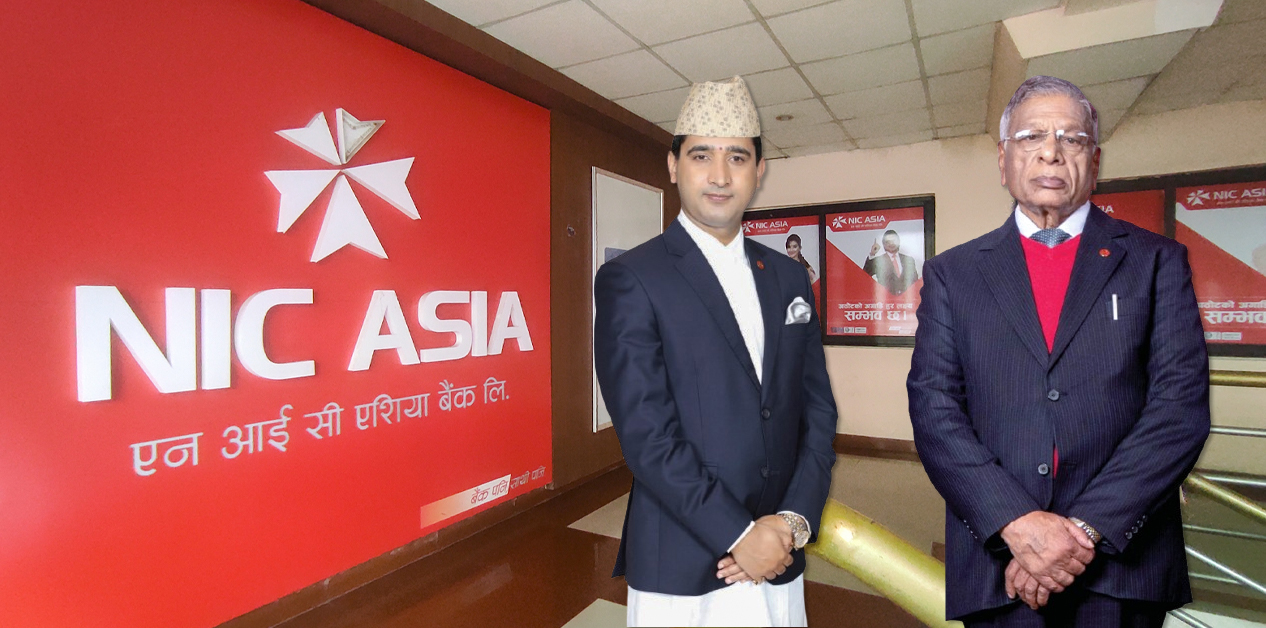
Former CEO of NIC Asia Bank Roshan Kumar Neupane and Chairman of the Board of Directors Tulsiram Agrawal. Photo credit. Annual report of the bank
Ramavatar Mahato of Lahan, Siraha, is another victim of the bank. He had used Rs 0.134 million from NIC Asia Bank’s credit card. He went to the Lahan branch of the bank, even taking a public representative with him, claiming that the bank had charged Rs 0.096 million in interest for that amount in seven months.
These are just a few examples of excessive collection from customers who are less knowledgeable about banking transactions. The bank had made the fees for loan processing, penalties, fines, LC (Letter of Credit), and sale of foreign exchange the main sources of income.
Looking at the data published by the bank every year, the bank earned Rs 869.7 million from fees and commission income in the fiscal year 2017/18. This income increased to Rs 2.48 billion in the fiscal year 2019/20. This income was Rs 1.62 billion in the fiscal year 2020/21.
The bank increased other operating income alone to Rs 25.59 billion in the fiscal year 2019/20. The bank’s annual report states that this income was only Rs 7.6 billion in the previous fiscal year 2018/19. The bank’s other income includes fees for ATM cards, credit cards, loan applications and processing, and the sale of foreign exchange.
Neupane, who received the ‘Prabal Janasewashree’ medal in 2019 and describes himself as a ‘Banker, A Big Dreamer’ on his Facebook profile, was ultimately deemed an unsuccessful banker.
If NIC Asia’s other income is compared with that of another bank of the same level, a big difference is found. In the fiscal year 2076/77, Sanima Bank’s operating income was Rs 5.3096 billion and Siddhartha Bank’s operating income was Rs 7.1326 billion. Everest Bank’s operating income in the same year was also only Rs 5.8482 billion.
After it was found that NIC Asia Bank had taken excessive interest from customers, the Rastra Bank had also directed it to return the amount. But the bank did not comply with the instruction and added a risk premium to the interest in the fiscal years 2021/22 and 2022/23. The fact was discovered that it provided incorrect reporting to the Nepal Rastra Bank by assigning a low loan risk weight, contrary to the capital adequacy framework.
Even in such an inexcusable mistake, the Nepal Rastra Bank’s role was limited to simply warning CEO Neupane and the promoters. A retired executive director of Nepal Rastra Bank says on the condition of anonymity, “The influence and access of NIC Asia Bank were astonishing. Even knowing that they compromised on good governance, there was no situation to take action.”
Perhaps because of such influence on the regulatory body, the bank paid more interest than specified on the fixed deposits of its promoters and family members. Nepal Rastra Bank also found that the bank allowed family members of the promoters to open fixed deposit accounts by backdating them and paid them higher interest. But even in this, Rastra Bank mentioned in the details of actions taken for the second quarter of (Oct 2024/Jan 2025) that it had warned CEO Neupane and some promoters.
The Nepal Rastra Bank Act itself mentions provisions for penalizing the CEO up to Rs 0.5 million for such serious negligence, withholding salary and other services/facilities, removing promoters from their posts, and retiring employees.
At that time, Nepal Rastra Bank’s on-site inspection found that the bank had not complied with some instructions regarding loan classification and loan loss provisioning, capital fund and risk weight, interest rate, and corporate governance, and it had been told to refrain from such activities and take corrective measures.
But after repeated warnings, Neupane, who continued to be stubborn, was asked for clarification by Nepal Rastra Bank on ‘Why should cash penalty not be imposed?’ citing the increase in the bank’s non-performing loans and non-banking assets, decrease in income, and failure to maintain corporate governance. Neupane finally resigned when he understood that Rastra Bank had initiated the action process through the clarification.
Neupane, who received the Prabal Janasewashree medal from President Bidhya Devi Bhandari in 2019 and describes himself as a ‘Banker, A Big Dreamer’ on his Facebook profile, was ultimately deemed an unsuccessful banker. Nepal News’ attempt to get a reaction from Neupane about his controversial tenure and departure was unsuccessful. He did not answer the phone or messages.
Unnatural growth
Anal Raj Bhattarai, a banking expert and former banker who observed this financial deviation in NIC Asia Bank under Neupane’s leadership, says, “The growth of NIC Asia Bank was unnatural. When asked why the bank’s representatives did this, they would reply that investment in small and medium enterprises has increased, so the size appears to have grown.”
The arbitrary increase in loans by the bank, stating it was for investment expansion, was also not quality. When the loans given arbitrarily in the name of increasing investment were not recovered on time, the bank would resort to various tactics. It would even place security guards at the borrower’s house. It would take the collateral to the auction process without properly communicating with the borrower. The bank has been issuing notices for the auction of collateral of hundreds of borrowers at the same time on various dates. Most recently, on September 1, 2025, a seven-day notice was published for the auction of collateral of 150 borrowers.
In February 2024, depositors of NIC Asia Bank started withdrawing money rapidly. Dissatisfaction with the bank was being publicly expressed, citing various pressures put on borrowers and fast-track auctioning of collateral. At that time, medical entrepreneur Durga Prasai was spreading negative propaganda nationwide, saying the bank was not safe.
After that, a line of depositors formed to withdraw money from the bank. At that time, Rastra Bank had to issue a statement saying that the depositors’ savings were safe. The statement issued by Nepal Rastra Bank on February 20, 2024) said, ‘Looking at the recent condition of the operation of banks and financial institutions, the overall banking sector is competent and strong, and as Nepal Rastra Bank is regularly monitoring the transactions of banks and financial institutions, the public’s deposit is fully safe.’
Impact on profit
The direct impact of the bank’s arbitrary investment not being recovered on time has fallen on its profit. In the fiscal year 2023/24, the bank’s profit decreased by 84.22 percent, while non-performing loans increased by 292 percent.
Non-performing loans, which were 0.88 percent the previous year, increased to 3.45 percent by 2023/24. When Rs 3.068 billion was set aside (provisioning) for this, the profit was affected. That year, the bank was only able to earn a profit of Rs 701 million. The year before, the bank had earned a profit of Rs 4.445 billion.
The decline in profit did not stop in the last fiscal year either. In the fiscal year 2024/25, the bank’s profit shrank by 76.97 percent and was limited to Rs 161.5 million. Last year, the bank provisioned Rs 4.14 billion for non-performing loans.
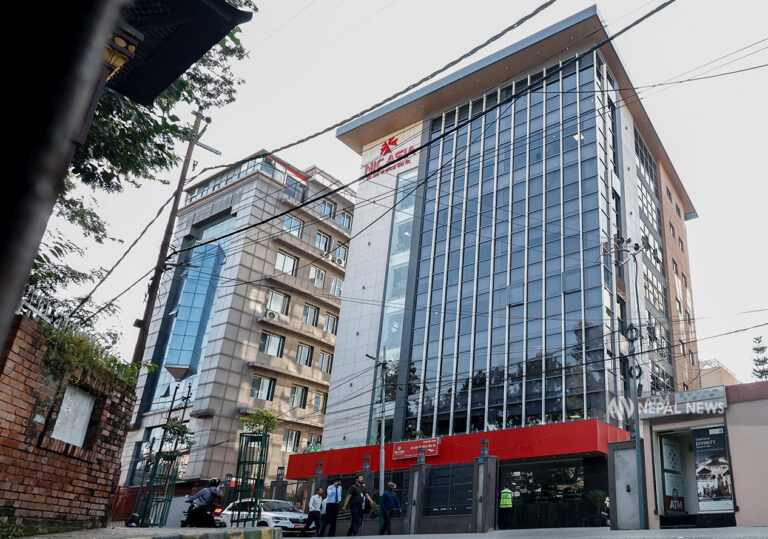
NIC Asia Bank Corporate Office. Photo: Bikram Rai/ Nepal News
By the last fiscal year, the bank’s bad loan has become excessive. The bad loan increased from 3.45 percent in the previous fiscal year to 6.28 percent. The bank’s interest income is also continuously decreasing.
Last year, the bank’s distributable profit was a negative Rs 5.21 billion. The previous year, such profit was a negative Rs 2.66 billion. These negative indicators for the last two years show that the bank is progressively moving towards being problematic.
Former banker Parashuram Kunwar says that bank promoters and management should also consider the circumstances when making ambitious plans. “The situation that might arise now should have been assessed. When increasing investment in small businesses, they should have thought that if those businesses fail, the bank also reaches a failure state, and should have prepared themselves accordingly,” he says.
When the bank is in trouble, the returns to investors are lost, and furthermore, the failure of an ‘A’ class bank creates a ‘chain-effect’ on the overall economy. Currently, NIC Asia Bank is at the most difficult juncture in the institution’s history. As non-banking assets are not being sold, an auction portal has been opened and auction notices have been placed.
Kiran Pandit, Executive Director and Spokesperson of Nepal Rastra Bank, says that Nepal Rastra Bank’s eye is on every activity of NIC Asia. He says, “Nepal Rastra Bank is supervising responsibly. Rastra Bank is fulfilling the duties specified by the law responsibly.”
‘We are safe’
Ganesh Man Shrestha, one of the promoters representing the general shareholders on the NIC Asia Bank’s Board of Directors, claims that the bank’s indicators are not in a situation to panic. He argues that the bank’s profit appears to have decreased due to the increase in bad loans and the need for ‘provisioning’ for them. He says, “The bank was able to provision because it earned money. After the loan is recovered, that money will be counted as profit. The bank’s operating income is still good.” He attributes the problem to the economic recession. He says, “Most of the investment was in real estate. As it was not sold, the bank’s investment was not recovered. It also became difficult to collect interest.”
After Neupane resigned as CEO of NIC Asia Bank, Deputy CEO Santosh Kumar Rathi has been given the responsibility of Acting CEO. He says that after taking over the bank’s management, he is prioritizing loan recovery. “The bank is a team game. The institution becomes strong through the collective effort of the team. There is no instant magic solution. We will take some time and make the institution stronger,” he says.
Rathi says that while other banks had high corporate loans and recovered them on time, NIC Asia Bank gave many loans of Rs 3 million each in urbanizing villages, and due to the slow economy, the bank’s indicators look somewhat negative. He claims, “Loan recovery is getting better. We are in a safe condition.”